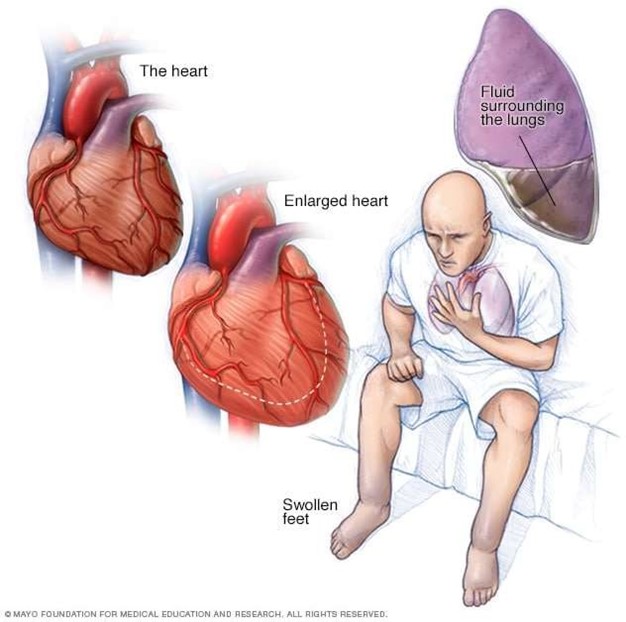A nurse is teaching home care to the parents of a preschool-age child who has heart failure.
Which of the following information should the nurse include in the teaching?
Increase the child's oxygen flow rate until the child no longer has cyanosis.
Weigh the child once each month.
Withhold digoxin if the child's pulse is greater than 100/min.
Provide for periods of rest.
The Correct Answer is D
Provide for periods of rest.

Children with heart failure may have trouble breathing, especially with activity, and may feel tired.
It is important for them to have periods of rest to help manage their symptoms.
Choice A is wrong because increasing the child’s oxygen flow rate should be done under the guidance of a healthcare provider.
Choice B is wrong because it is important to monitor the child’s weight more frequently than once a month.
Choice C is wrong because digoxin is a medication that can help the heart beat stronger with a more regular rhythm and should not be withheld based on pulse rate alone.
Nursing Test Bank
Naxlex Comprehensive Predictor Exams
Related Questions
Correct Answer is D
Explanation
Wearing a wide-brimmed hat can help protect a child’s face, neck and ears from the harmful effects of the sun.

Choice A is wrong because while staying under a beach umbrella can provide some protection from the sun, it is not enough on its own.
Choice B is wrong because loose-weave clothing may not provide enough protection from the sun’s rays.
Choice C is wrong because a sunscreen with an SPF of at least 30 is recommended for adequate protection.
Correct Answer is B
Explanation
The nurse should initiate droplet isolation precautions when admitting a child who has acute epiglottitis.
Epiglottitis is commonly caused by Haemophilus influenzae type B and can be transmitted through respiratory droplets.
Choice A is wrong because obtaining a throat culture is not recommended when epiglottitis is suspected, as it can cause further obstruction of the airway.
Choice C is wrong because assisting the child into a supine position can worsen the airway obstruction.
Children with epiglottitis prefer to sit upright with the chin extended and mouth open.
Choice D is wrong because checking oxygen saturation every 4 hours may not be frequent enough for a child with acute epiglottitis who may require continuous monitoring of oxygen saturation.
Whether you are a student looking to ace your exams or a practicing nurse seeking to enhance your expertise , our nursing education contents will empower you with the confidence and competence to make a difference in the lives of patients and become a respected leader in the healthcare field.
Visit Naxlex, invest in your future and unlock endless possibilities with our unparalleled nursing education contents today
Report Wrong Answer on the Current Question
Do you disagree with the answer? If yes, what is your expected answer? Explain.
Kindly be descriptive with the issue you are facing.
